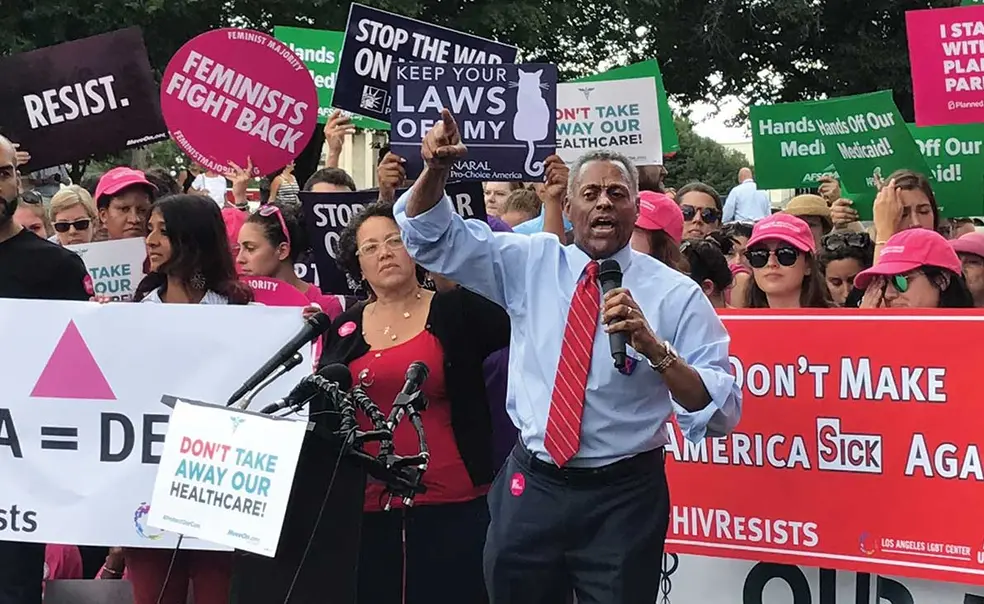Jesse Milan Jr. ’78 Is Working to End the HIV Epidemic
Activist sees progress, but “a lot of work to do”
Jesse Milan Jr. ’78 got the HIV virus at the beginning of the AIDS epidemic, 40 years ago. Today, as president and CEO of AIDS United, a national advocacy and grantmaking nonprofit, he hopes to bring the epidemic to an end. Medications can prevent and treat the disease, yet each year in the U.S. there are 35,000 new HIV infections and 5,000 deaths from AIDS. According to the Centers for Disease Control and Prevention, the toll is worst in the Southern states, in part because most haven’t expanded Medicaid under the Affordable Care Act. Milan, a lawyer, became an activist after the death of his partner from AIDS in 1985. His previous roles include AIDS director for the city of Philadelphia. He spoke with PAW about his work.
Do you see similarities between the HIV/AIDS epidemic and COVID?
The racial disparities that we are seeing in COVID have been the case with HIV since the beginning. Twelve percent of the U.S. population is African American, but more than 40 percent of the people living with HIV in this country are African American. And among those who are newly diagnosed, the largest percentage are young Black and brown gay men. Racial health equity must be achieved, and this is the moment where we need to step up and make it happen.
What does it mean for you to have lived with the virus for 40 years?
I feel very fortunate. To have seen so many people who did not make it this far gives me a real sense of privilege and purpose. Today, more than 50 percent of the people living with HIV in this country are already over the age of 50. This is great news. So, for me, living with HIV today is about taking care of my own health and making sure that I do what is needed to continue to live a healthy life, but also my role for our community, to help others get to that point of living a healthy and long life and to stop all new infections and deaths from this disease.
“I feel very fortunate. To have seen so many people who did not make it this far gives me a real sense of privilege and purpose. Today, more than 50 percent of the people living with HIV in this country are already over the age of 50. This is great news.”
Is that a realistic dream?
The one important goal for any person living with HIV is to reach what’s known as viral suppression. If you achieve an undetectable viral load, your virus is also not transmittable to other people. Today, barely 50 percent of people living with HIV in this country are achieving viral suppression, so we have a lot of work to do.
When do you believe we will no longer have people dying of this disease?
Prior to the COVID-19 pandemic, AIDS United and our partners were pushing a goal of ending this epidemic by 2025. The two years lost because of the COVID pandemic and the redeployment of so many public-health resources is causing us to now focus on the must-have goal of ending this epidemic no later than the end of this decade. [Editor’s note: After this interview, the Biden administration adopted a goal of reducing new HIV infections by 90 percent by 2030.]
What sort of reaction have you received from classmates to this cause?
Every time I go to Reunions, I’m always gratified by how my classmates embrace the evolution of Jesse. Most recently, AIDS United sent out an appeal to celebrate my birthday, and my heart burst when I saw the number of classmates who responded.
Interview conducted and condensed by Charles Wohlforth ’86












No responses yet